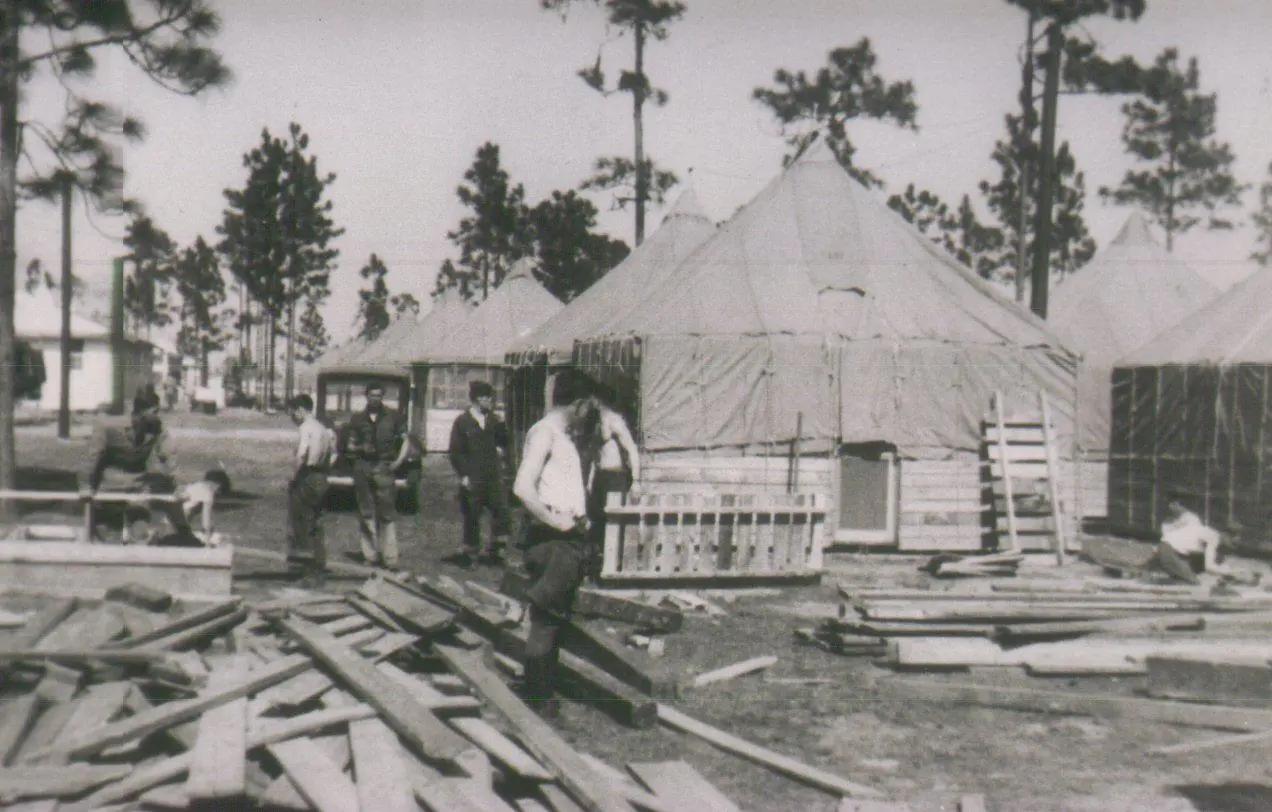As World War II began in 1939, the population of Florida was less than two million people. The population of the state grew exponentially each decade after World War II, and military installations constructed during that conflict were a major factor in that growth.
Daniel Hutchinson is Assistant Professor of History at Belmont Abbey College in North Carolina. His doctoral dissertation at Florida State University was “Military Bases and the Transformation of the Rural South During World War II.”
“During the Great Depression, tourism to Florida really took a very big hit, and with the coming of World War II, many Florida communities that relied on tourism saw military bases as a way to recover,” says Hutchinson. “Hotels, resorts, tourist destinations of all kinds sent letters to the War Department saying ‘turn our hotel into a troop training facility, or a troop recreational facility, or a convalescent hospital,’ and the War Department took up these offers.”
World War II provided Florida with unprecedented economic growth and revived areas that had been crippled during the Great Depression. Defense contracts led to construction jobs, and then other civilian employment opportunities after military facilities were built. Rural landowners often benefited financially from the construction of military installations through government purchase of their property.
The impact of military facilities coming to an area was not always positive. Sometimes entire communities were lost. The impact on African American neighborhoods was usually negative.
“African American communities became prized targets to build military bases, because they were the cheapest lands that were available,” says Hutchinson. “Because African Americans didn’t have any real political strength in terms of resisting this, they often found themselves wiped off the map.”
Stark, Florida is located about 50 miles southwest of Jacksonville. Today, Stark is best known as the home of Florida State Prison. In 1940, Starke was a small, rural community of about 1,400 people. Life in Starke changed radically when the town was chosen as the site of Camp Blanding.
During World War II, Camp Blanding became Florida’s fourth largest city.
“There was a call for construction workers to come build the camp,” says Hutchinson. “Suddenly Starke was deluged with people. Some 32,000 migrants arrived to the community looking for a job. This is still the Great Depression, so the opportunity for a government job at a government pay scale was incredibly attractive.”
People came from as far away as the Midwest seeking construction jobs at Camp Blanding.
“It was in some ways both a benefit and a thorn in the side of Starke,” says Hutchinson. “Starke benefitted tremendously economically from the arrival of these soldiers, but Starke had a difficult time with its limited infrastructure, processing and dealing with thousands of new people.”
Other Florida communities were significantly impacted by the expansion of existing military installations.
“Pensacola, for example, was a community with a long standing military presence, but World War II really heightened the demand for labor there,” says Hutchinson. “The Pensacola Naval Air Station hired 15,000 civilian workers to run its facilities. You have thousands of Floridians leaving the fields and going to work in the cities near these military bases.”
During World War II Florida’s population exploded. Key West had 13,000 residents in 1940 and 45,000 by war’s end five years later. The population of Miami almost doubled to more than 325,000. After the war the population of the United States increased by 15 percent, and the population of Florida expanded by 46 percent.
“One of the lasting impacts these military bases have is it brings in millions of non-Floridians to the state for the first time, who see Florida’s beaches, Florida’s climate, and many of the soldiers that are stationed in Florida during the war are going to come back to Florida after the war as permanent residents,” says Hutchinson.
Building World War II bases also gave Florida the experience needed to bring additional federal jobs and federal infrastructure to the state.
“It’s hard to imagine that without these military bases that Florida would have been as successful in drawing things like NASA and the Space Coast into existence,” says Hutchinson. “Both of those were big government, big military projects, and there’s a connection there.”
